Plantsman David Glenn is a leading exponent of dry climate gardening and has gardened in one place for nearly 30 years. On 40 acres, Lambley Nursery & Garden is set around the 19th-century farmhouse David shares with his artist wife Criss Canning in the hot and dry windswept plains of the central Victorian gold fields, where the Djadjawurrung people farmed for millennia before Europeans settled in Australia.
Lambley’s complex of gardens, which includes dry-climate, flower, fruit and vegetable sections, is open all year round. The biggest challenge in making a garden here is the extremes of weather – nights in winter can drop to -6°C while in summer the days can frequently reach 45°C – so
the only plants David chooses to grow are those that are happy in this climate.
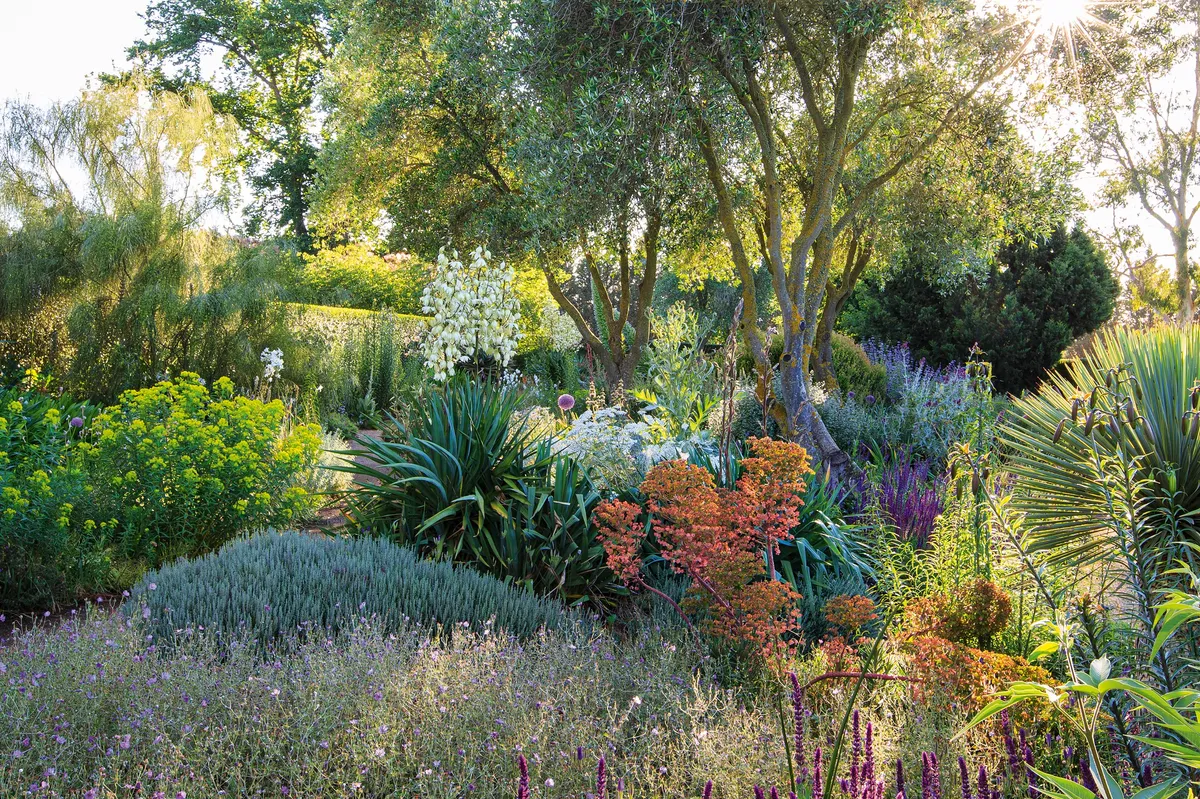
Foliage and flowers emerging under olive trees with their raised canopies are the hallmark of Lambley’s dry climate garden. Bushy shrubs and perennials, such as Salvia nemorosa ‘Amethyst’, evoke Mediterranean hillsides, while the large flowers of Yucca gloriosa and Euphorbia x martini add an exotic touch.
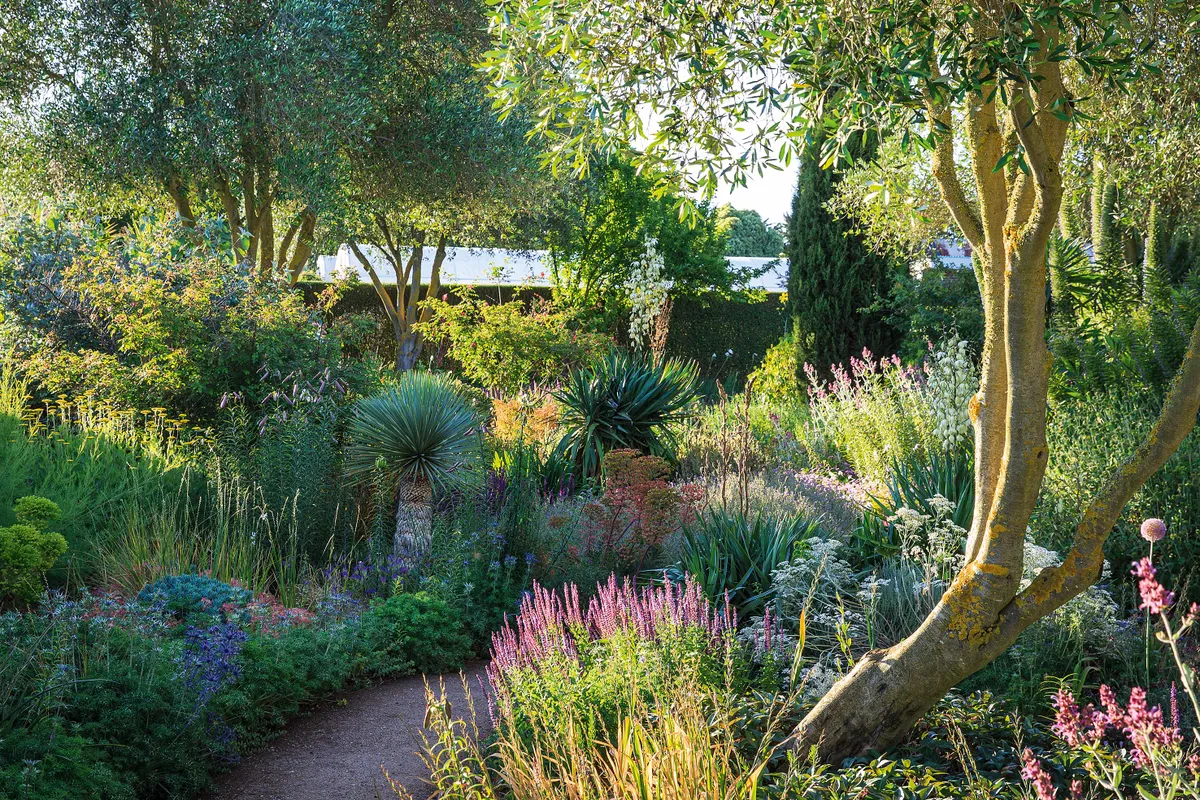
Windswept olive trees demonstrate the challenges of this dry garden. The spikiness offered by yuccas is cautiously maintained: their vigour can take over. However, the Yucca rostrata in the centre hasn’t flowered for 25 years.
In brief
What Dry perennial garden, organic vegetable and cutting flower garden alongside nursery. Where Victoria, Australia. Size Three-acre garden as part of a 40-acre property. Soil Volcanic, highly composted and mulched over 30 years. Climate Sitting at an altitude of 400m, with temperatures that range from -6ºC in winter to 45ºC in summer, the garden has a six-month frost period and is prone to high winds.
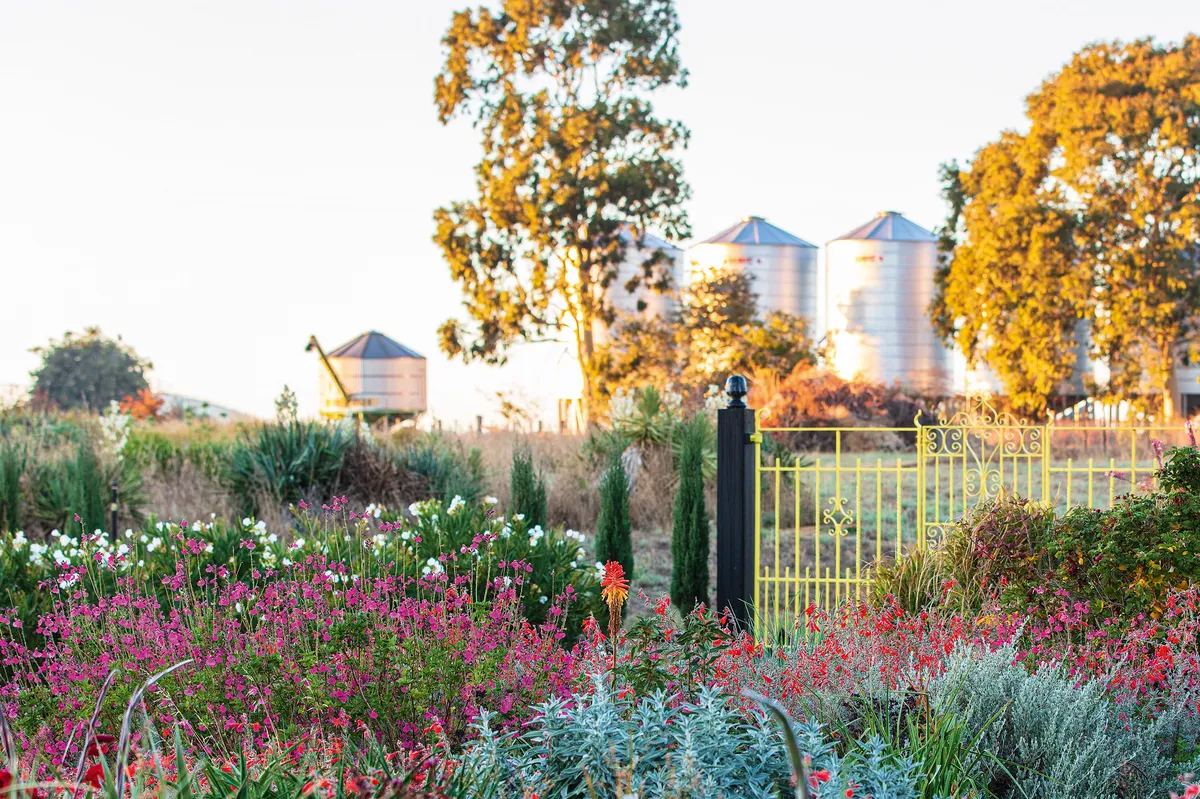
In this former paddock, eucalypts are kept to the perimeter, while pencil pines have been planted to provide wind protection and screening. The cool whites of Nerium oleander ‘Album Plenum’ offset the striking colours of pink Salvia ‘Penny’s Smile’ and the brilliant orange-red Zauschneria californica.
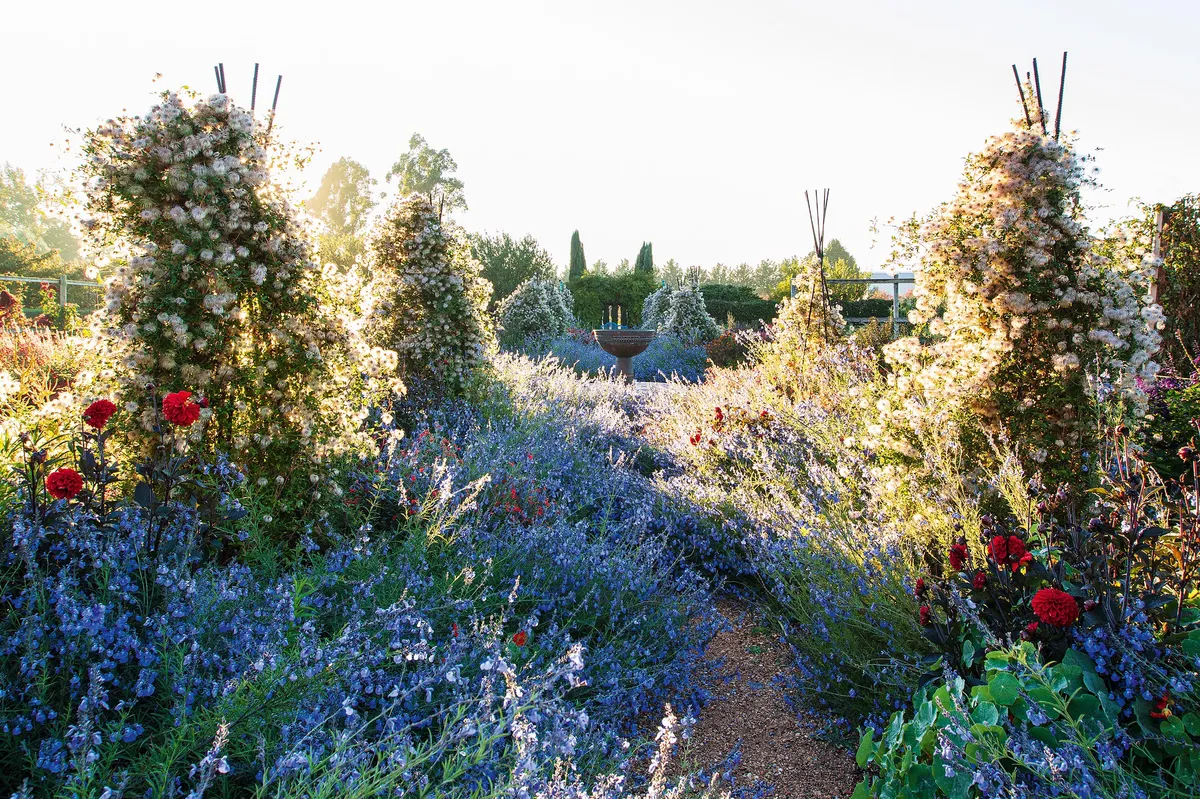
A 19th-century copper boiler,from a local factory, forms a centrepiece bird bath for Lambley’s central axis vegetable garden. The soft sea of blue, created by Delphinium ‘Völkerfrieden’ and Salvia azurea, is punctuated by the red Dahlia ‘Fire Mountain’ to give the picture an Impressionistic touch. Teepees covered by the soft old man’s beard seedheads of Clematis Golden Tiara (= ‘Kugotia’) add height – these seedheads are preceded in summer by delicate Chinese-lantern yellow flowers.
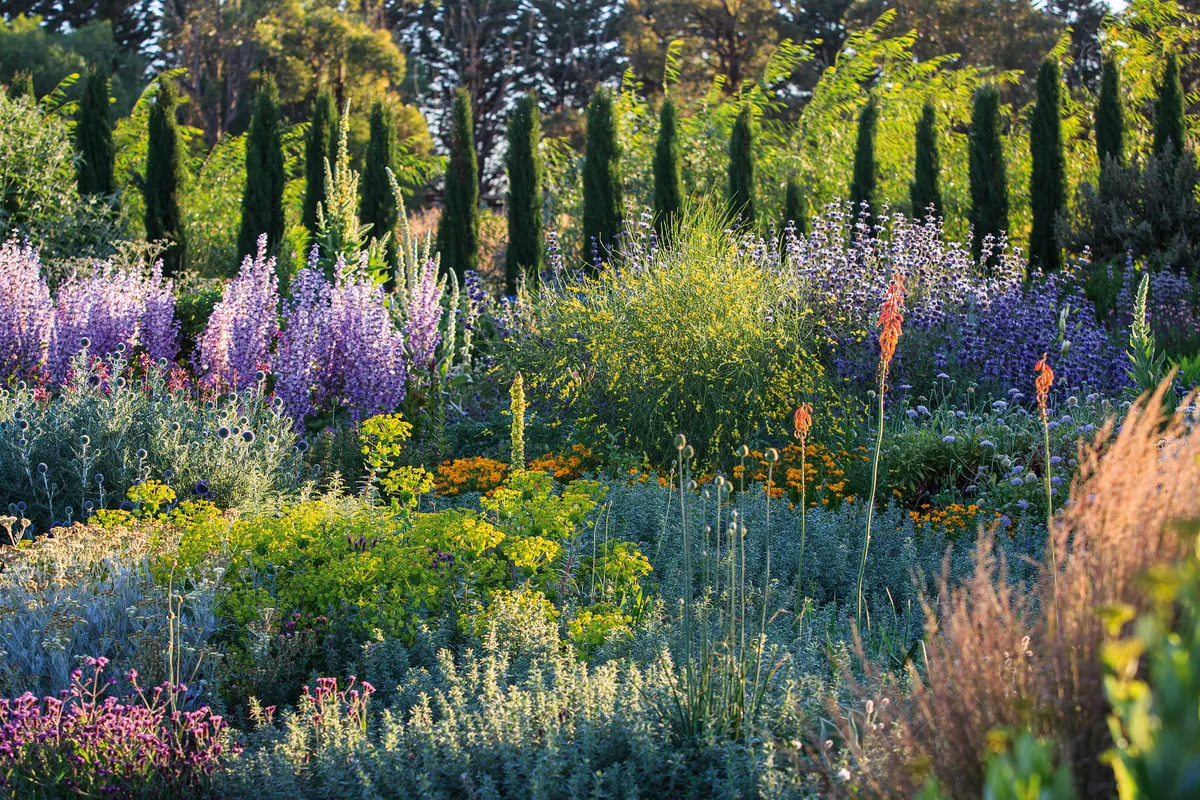
In the Mediterranean garden, drought-tolerant plants from southern Europe, such as the fragrant yellow broom Genista aetnensis and acid-yellow Euphorbia ‘Blue Haze’ mix with southern hemisphere natives including the Australian blue grass Poa labillardierei ‘Suggan Buggan’. Framing the yellow broom are two blue salvias. Salvia ‘Allen Chickering’, to the right, is a drought-tolerant Californian cultivar, while the fabulous Salvia sclarea var. turkestaniana ‘Jim Archibald’, grown from seed originally collected in Turkey by Jim and Jenny Archibald, is the clary sage David believes so lovely he now grows no other.
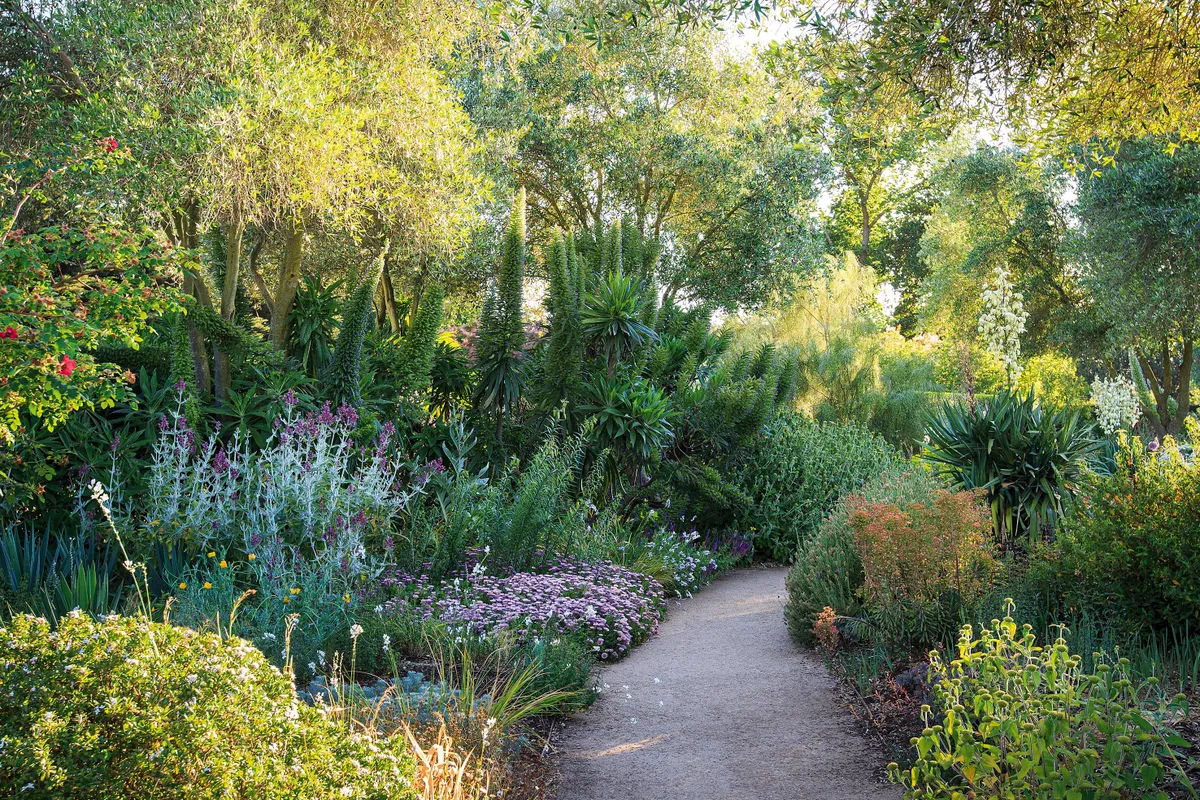
Striking groves of frost-hardy Echium ‘Cobalt Towers’ withstand both dry and frost, and can grow up to 4.5m. Elms planted in 1870 have been allowed to sucker to replace the older trees now in decline.
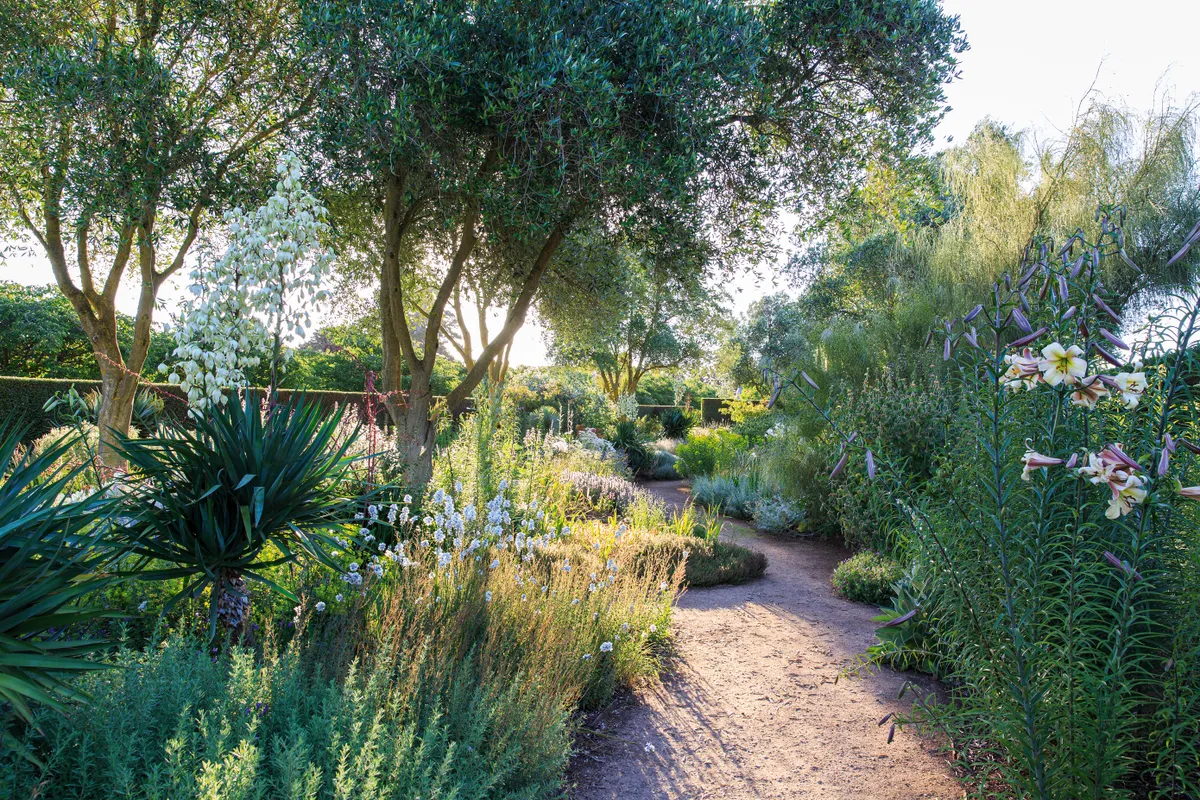
In the dry garden, sinuous paths wind around trees – “paths need to make sense, not snake around for the sake of it,” says David. Beneath the trees the delicacy of late-flowering Ixia polystachya contrasts with the striking beauty of Yucca gloriosa and Salvia canariensis f. candidissima, which is rare and difficult to propagate, with woolly leaves that age to silver-grey.
USEFUL INFORMATION Address Lambley Nursery & Gardens, 395 Lesters Road, Ascot, Victoria 3364, Australia. Tel+61 (03) 5343 4303 Web lambley.com.au Open Daily, 9am-5pm.
Here's another dry garden in Spain







